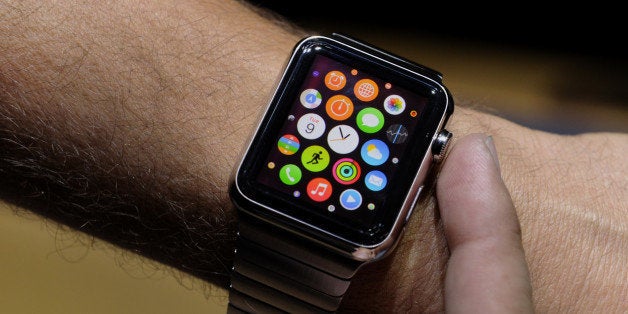
"Beam me up, Scottie" -- a phrase that was once a glamorous fantasy of sci-fi enthusiasts might now be becoming a reality. Unfortunately, I'm not speaking of the ability to transport William Shatner through space, but about the transponder on his clothing that's being used to communicate with the Enterprise.
Wearable tech is broadly defined as any form of electronics that can be worn on the body as either an accessory or as a material used in the clothing. Unless you live in San Francisco, you probably haven't seen too much of it. However, that's all about to change quickly with the April release date of the Apple Watch, which already has anticipated initial sales between 5 - 6 million units. Furthermore, analysts at Credit Suisse are forecasting the market size of wearable tech to increase from $3B-$5B to $50B over the next 5 years.
So what does this mean for all of us? Historically, the mass adoption of new technologies has provided unbelievable benefits. Looking at smartphone adoption (because I can't remember the pre-internet era), who could of guessed that we would be able to FaceTime with a family member living across the world for free, when only 5 years ago a phone call abroad would have been prohibitively expensive? But with this recent embrace of new technologies there has also been some very large drawbacks, including a loss of privacy (if you clicked through I bet you weren't expecting to learn that flashlight apps are "stealing" your sensitive data) and Nomophobia (cellphone withdrawal anxiety) to name a few.
So moving forward we need to ensure that we're using this new wearable technology to create meaningful interactions and beneficial experiences. I like to think of a world where my Fitbit knows when I'm asleep and automatically silences my phone and turns off my reading light. I also can't wait to try out Athos to fully understand what muscles I'm working on at the gym and what result that has on my body. We're about to enter an unprecedented era where what we do and how we communicate is fully integrated with stylish clothing and apparel.
These advancements are exciting but we should perhaps proceed cautiously. To start, the privacy of these devices needs to be looked at under a microscope. As seen with the failure of Google Glass, the public was largely concerned with the ability to be filmed and photographed without their knowledge or consent. Then there is the issue of where and how your information is being stored. Apple, one of the most trusted technology companies, known for making user-friendly devices, is even susceptible to vulnerabilities without it even being their fault (directly). Hackers this past year were able to take advantage of Apple's more recognizable customers by guessing their passwords and downloading their sensitive pictures. The advantage of backing up your pictures is valuable, but not fully understanding how to use iCloud (or even understanding what iCloud is) very clearly causes concern.
So to whom can we turn to ensure these concerns are met in the next generation of tech? One might say Congress, but regulation is difficult when lawmakers don't fully understand what's going on in the industry. I didn't want to point fingers at Healthcare.gov's massive enrollment issues when it launched (in 2013), but when the website went down again this year as the healthcare deadline approached, it needs mentioning. If I can't count on a government with an "unlimited" budget ($1.7b) to launch a website, I would rather not put the innovation of the technology industry at its mercy.
Therefore, the onus falls in two places. First on the software creators themselves, who need to be transparent about how our information is being monitored and stored. This is perhaps more crucial than ever before as we soon may be wearing devices that are hidden within our garments. The second onus is on ourselves. Now it's not reasonable to read every Terms of Use for each device/application you have, but at least look at your privacy/sharing settings and always set strong passwords.
We're on the verge of the "next big thing" as every employee at Samsung will tell you, but we need to be responsible to make sure the next step in tech evolution pushes us in the right direction. So as software creators and users alike, let's step up to the challenge and, dare I say, boldly go where no one has gone before!